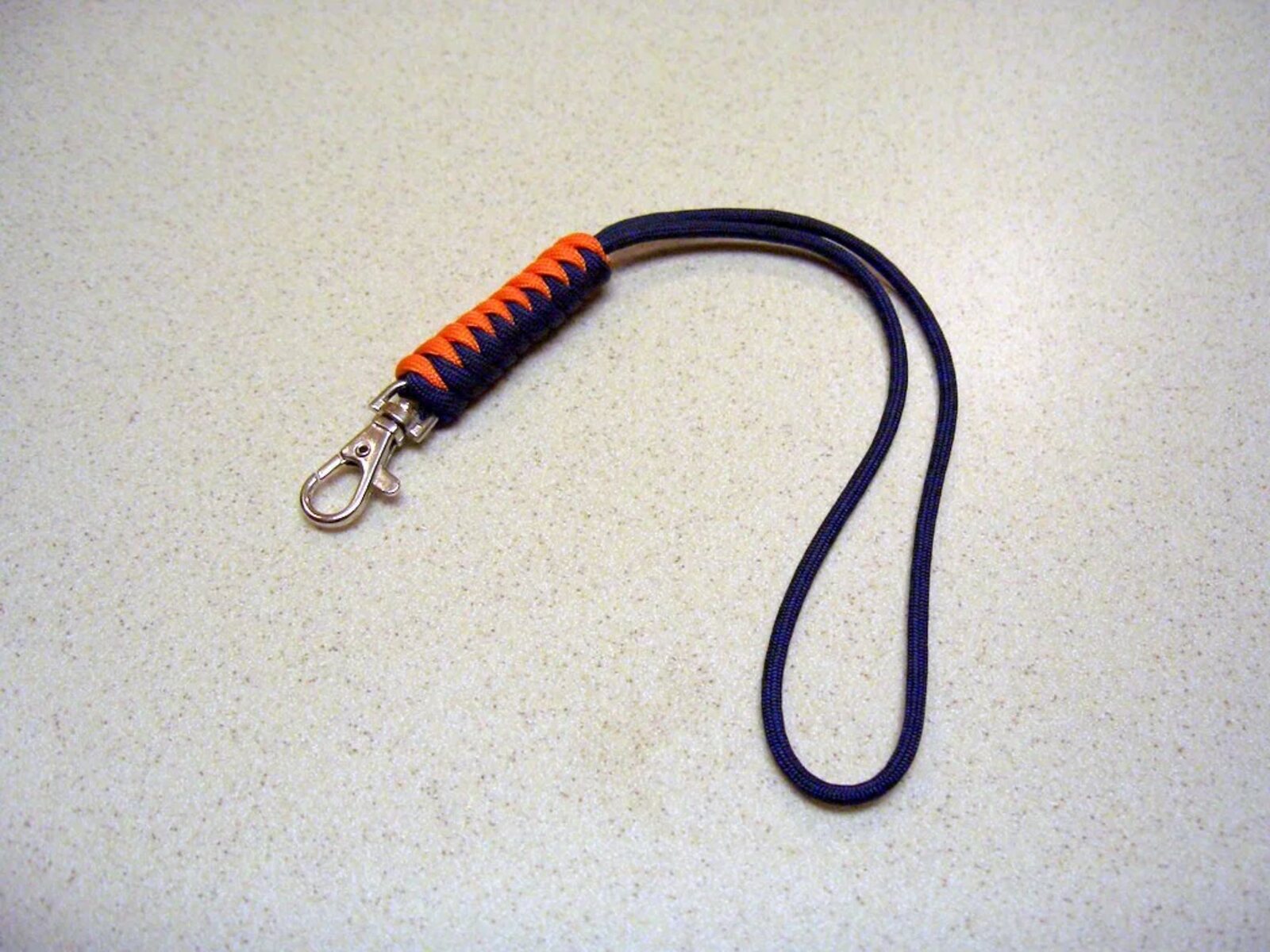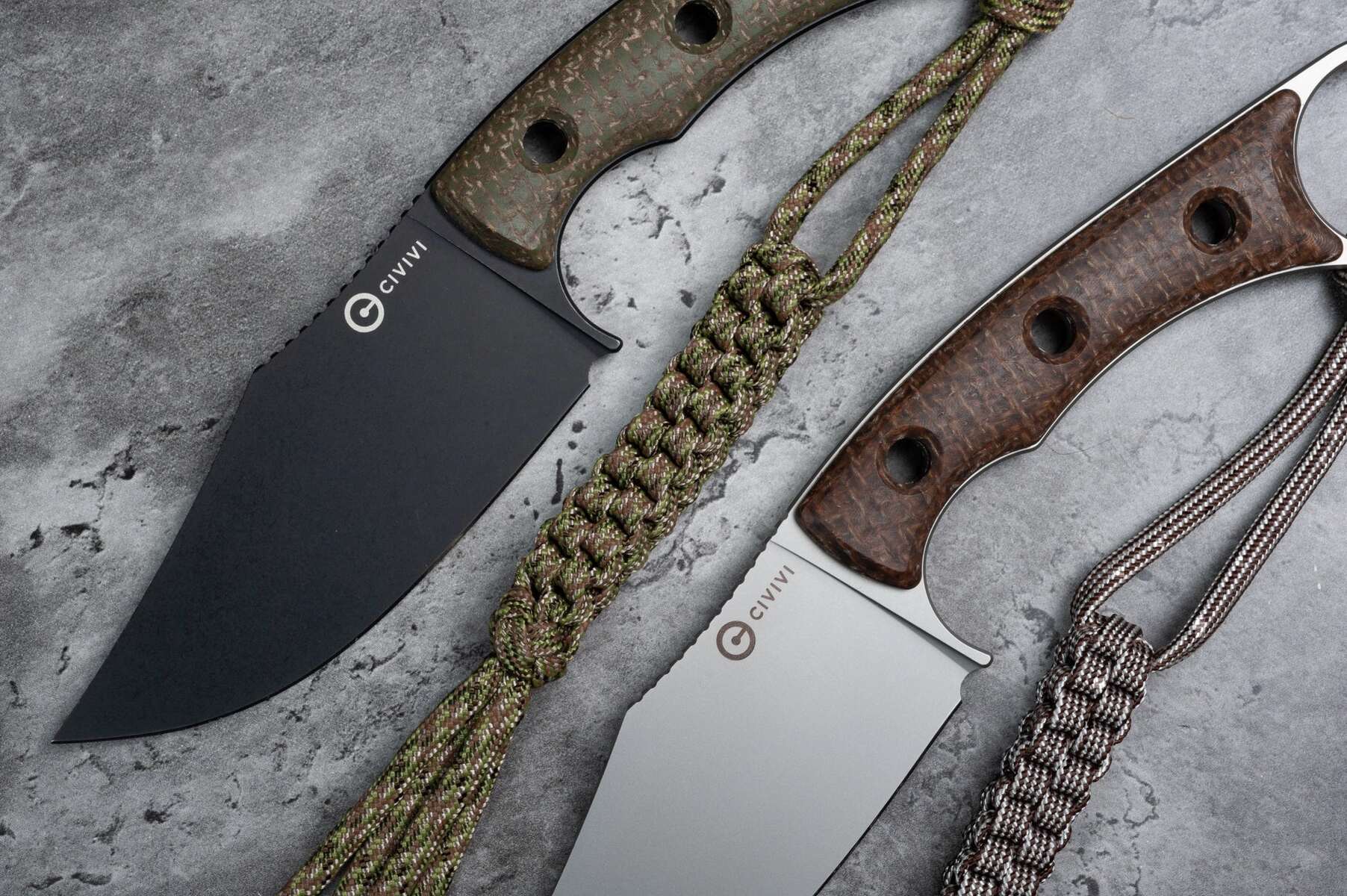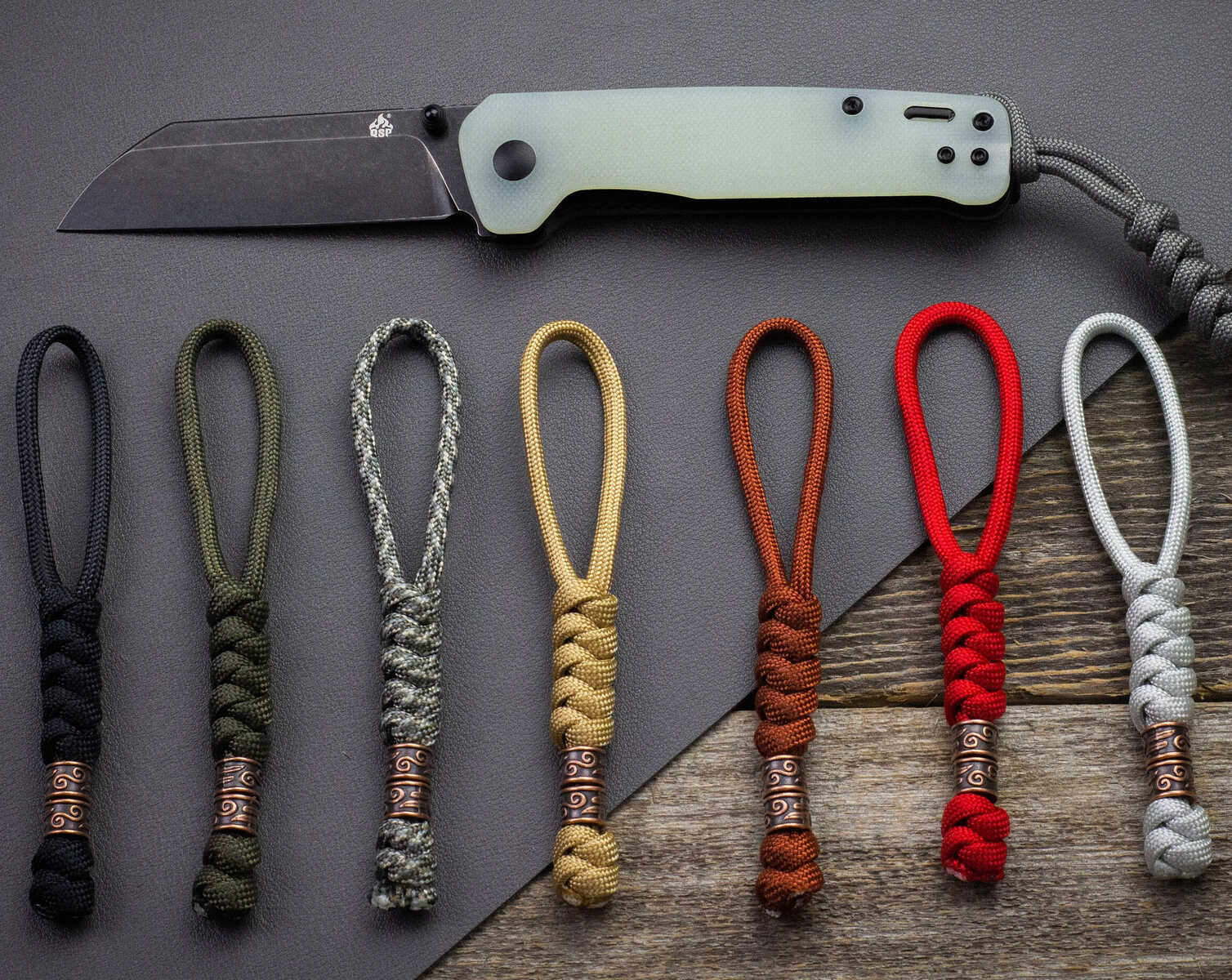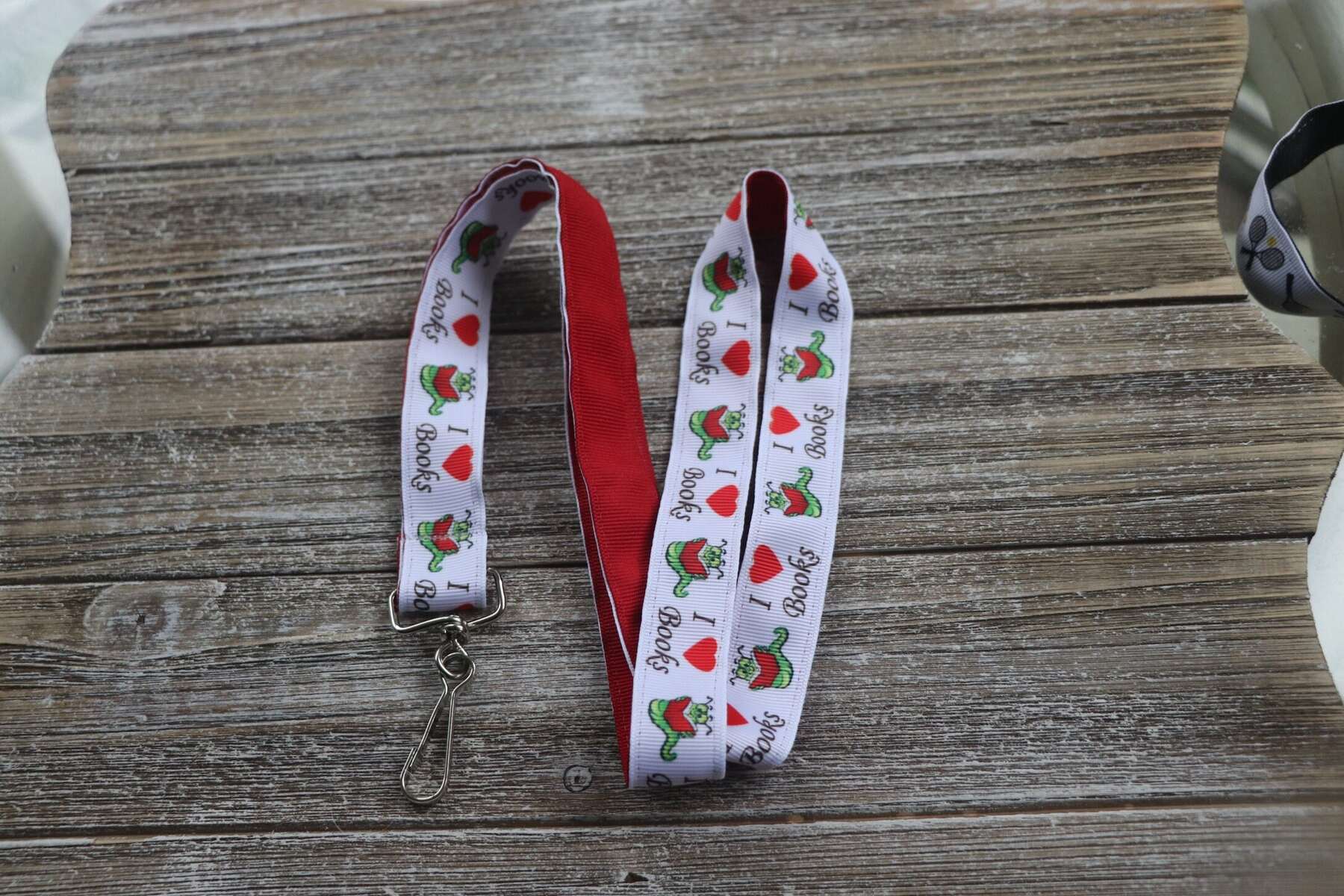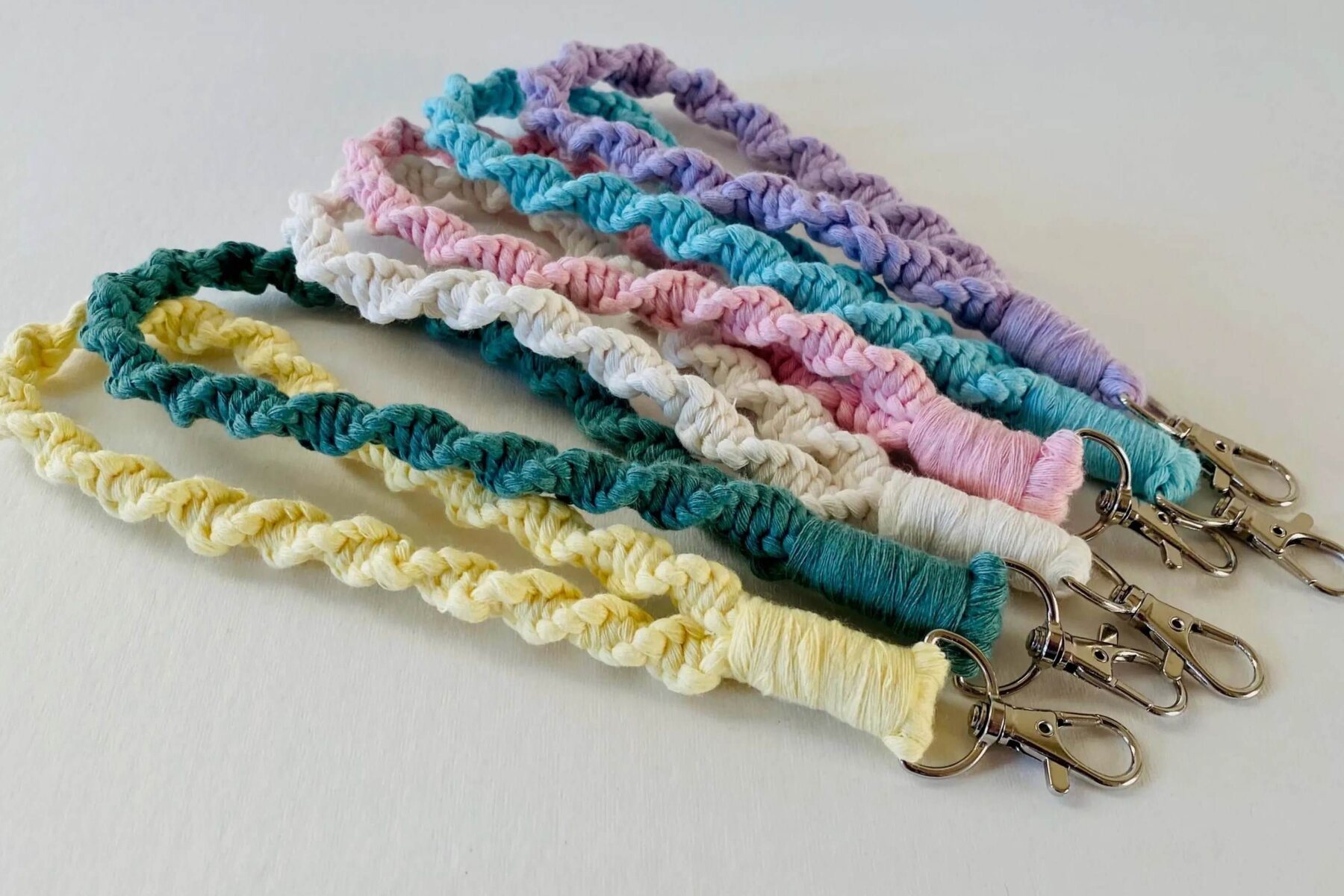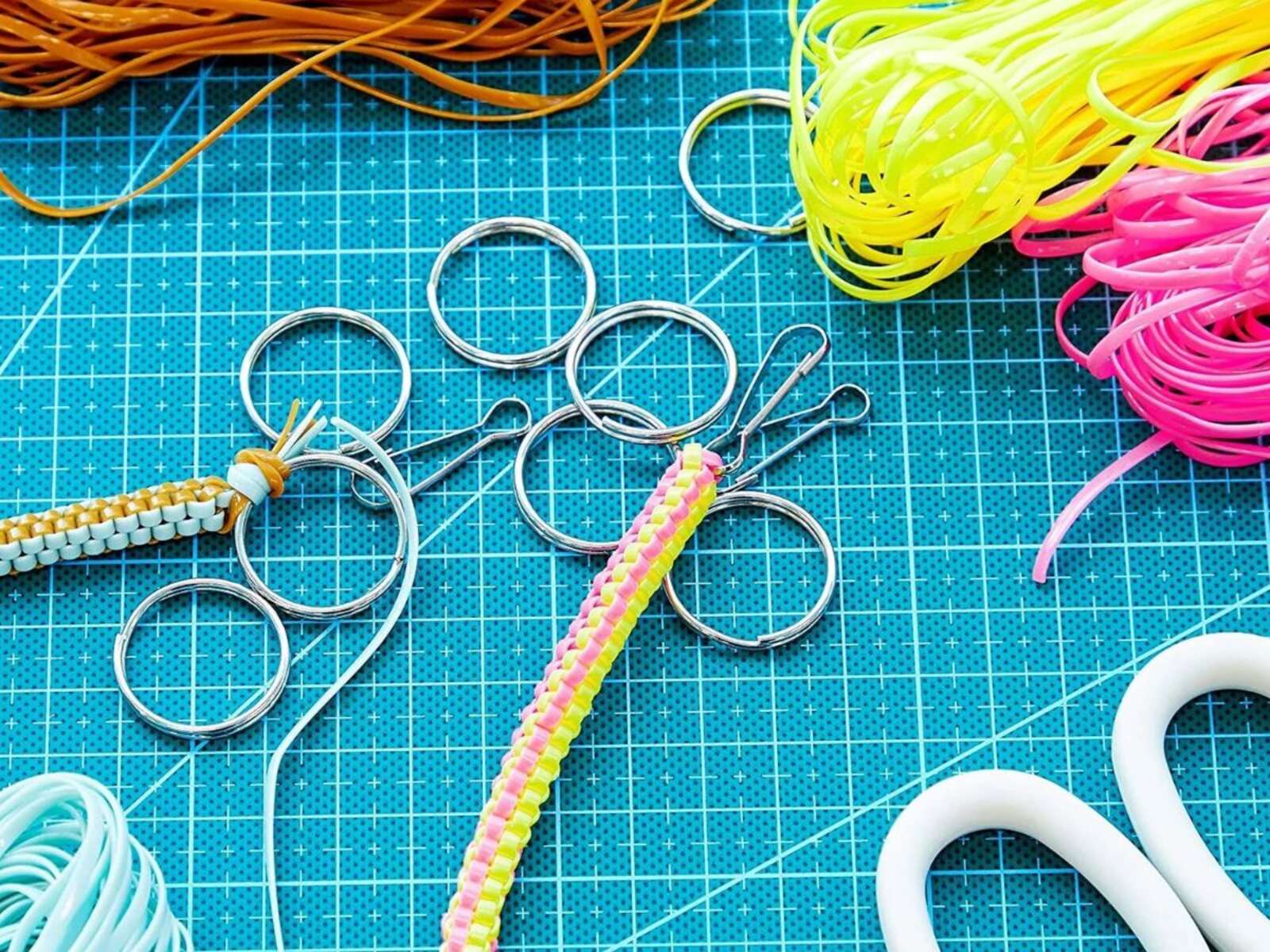Introduction
Lanyards have evolved from being mere functional accessories to becoming stylish and personalized fashion statements. They are not only practical for holding keys, identification cards, and small tools but also serve as a reflection of one's personality and interests. Among the myriad of lanyard designs, the snake knot lanyard stands out as a unique and visually striking option. Crafted using a series of interwoven knots, the snake knot lanyard offers a blend of functionality and aesthetics that appeals to both enthusiasts of paracord crafting and those seeking a distinctive accessory.
The snake knot lanyard, as the name suggests, is characterized by its resemblance to the scales of a snake, creating a visually captivating pattern. This design has gained popularity not only for its eye-catching appearance but also for the meditative and therapeutic experience it offers during the crafting process. Assembling a snake knot lanyard involves a repetitive yet rhythmic sequence of weaving, making it a soothing and engaging activity for individuals of all ages.
Whether you are a seasoned paracord artisan looking to expand your repertoire or a novice seeking an enjoyable and rewarding DIY project, mastering the art of crafting a snake knot lanyard can be an enriching experience. With the right guidance and a creative mindset, you can transform strands of paracord into personalized accessories that reflect your individuality and craftsmanship.
In the following sections, we will delve into the intricacies of creating a snake knot lanyard, from selecting the ideal materials to mastering the weaving technique. Additionally, we will explore ways to infuse your lanyard with personalized touches, allowing you to unleash your creativity and make each piece truly unique. By the end of this guide, you will be equipped with the knowledge and inspiration to embark on your own snake knot lanyard crafting journey, unlocking the potential to create stunning and meaningful accessories.
Getting Started with the Snake Knot
Before delving into the intricate art of crafting a snake knot lanyard, it is essential to familiarize oneself with the foundational aspects of this weaving technique. The snake knot, also known as the Portuguese sinnet, is a series of interwoven knots that create a distinctive, serpentine pattern resembling the scales of a snake. To embark on this creative journey, one must gather the necessary tools and materials, as well as develop a basic understanding of the weaving process.
Tools and Materials
To begin your snake knot lanyard project, you will need a few essential tools and materials. These include:
-
Paracord: Select high-quality paracord in your preferred colors to form the foundation of your lanyard. The standard length of paracord for crafting a lanyard is typically around 4-5 feet, but this can vary based on your desired lanyard length.
-
Scissors: A pair of sharp scissors will be indispensable for cutting the paracord to the required lengths and trimming any excess material.
-
Lighter: A lighter is essential for sealing the ends of the paracord to prevent fraying and ensure a neat, professional finish.
-
Optional Accessories: Depending on your design preferences, you may also consider incorporating additional elements such as key rings, swivel hooks, or beads to enhance the functionality and aesthetics of your lanyard.
Familiarizing with the Weaving Technique
The snake knot weaving technique involves a repetitive sequence of overhand knots, resulting in a visually appealing pattern that resembles the scales of a snake. It is crucial to understand the fundamental steps involved in creating this knot, as well as the rhythm and tension required to achieve a uniform and aesthetically pleasing result.
By mastering the basic weaving process and becoming familiar with the tactile nuances of manipulating the paracord, you will gradually develop the dexterity and precision necessary to create intricate and visually striking snake knot lanyards.
Cultivating Creativity and Patience
As with any craft, patience and creativity are integral to the process of mastering the snake knot technique. Embrace the meditative nature of weaving as you embark on this creative endeavor, allowing yourself the freedom to experiment with different color combinations, knot densities, and embellishments to infuse your lanyard with a personalized touch.
By nurturing a spirit of creativity and patience, you will not only enjoy the process of crafting a snake knot lanyard but also have the opportunity to create unique and meaningful accessories that reflect your individual style and craftsmanship.
In the subsequent sections, we will delve deeper into the process of selecting the right materials and provide a step-by-step guide to crafting a snake knot lanyard, equipping you with the knowledge and inspiration to embark on your own creative journey in paracord crafting.
Choosing the Right Materials
Selecting the appropriate materials is a pivotal step in the process of crafting a snake knot lanyard. The choice of paracord, in particular, plays a significant role in determining the overall quality, durability, and visual appeal of the finished lanyard. When it comes to paracord selection, there are several factors to consider to ensure that the materials align with your creative vision and functional requirements.
Factors to Consider
1. Paracord Type and Quality
The type of paracord used significantly impacts the strength and appearance of the lanyard. 550 paracord, known for its versatility and durability, is a popular choice for crafting lanyards due to its optimal thickness and strength-to-weight ratio. Additionally, ensuring that the paracord is made from high-quality nylon fibers is crucial for guaranteeing its resilience and longevity.
2. Color and Aesthetic Appeal
The color palette of the paracord presents an opportunity to infuse your lanyard with personal style and flair. Whether opting for vibrant and bold hues or subtle, earthy tones, the color selection can reflect your individuality and complement your overall aesthetic preferences. Furthermore, considering the visual impact of the snake knot pattern, contrasting or complementary color combinations can be strategically utilized to enhance the lanyard's visual allure.
3. Length and Thickness
The length and thickness of the paracord are directly correlated with the dimensions and functionality of the lanyard. Depending on the intended use and design specifications, determining the appropriate length and thickness of the paracord is essential for achieving the desired proportions and structural integrity of the lanyard.
Personalization and Customization
In addition to the paracord, incorporating optional accessories such as key rings, swivel hooks, or beads can add a personalized touch to the lanyard, elevating its functionality and visual appeal. These accessories not only enhance the practicality of the lanyard but also provide opportunities for creative embellishments that resonate with your personal style and preferences.
By carefully considering these factors and making informed decisions regarding the materials for your snake knot lanyard, you can lay the foundation for a visually captivating, durable, and personalized accessory. The right materials not only contribute to the aesthetic appeal of the lanyard but also ensure its functionality and longevity, making the crafting process both gratifying and rewarding.
Step-by-Step Guide to Crafting a Snake Knot Lanyard
Crafting a snake knot lanyard is a gratifying and creative endeavor that allows you to transform strands of paracord into a visually captivating and functional accessory. By following a systematic approach and mastering the weaving technique, you can create a lanyard that reflects your individual style and craftsmanship. Here is a detailed step-by-step guide to help you embark on your own snake knot lanyard crafting journey:
Step 1: Preparation
Begin by gathering the necessary materials, including high-quality paracord in your preferred colors, scissors, and a lighter. Select a workspace with ample room to maneuver the paracord and ensure proper lighting for clear visibility. Organize your materials to streamline the crafting process and minimize interruptions.
Step 2: Cutting the Paracord
Measure and cut the paracord to the desired length for your lanyard, typically ranging from 4 to 5 feet. Use the scissors to cleanly cut the paracord, ensuring uniform ends that are free from fraying. Employ caution when handling sharp objects to prevent any accidents during this stage.
Step 3: Sealing the Ends
Using the lighter, carefully seal the ends of the paracord to prevent fraying. Gently run the flame along the cut ends, melting the nylon fibers to create a neat and secure seal. Exercise caution and maintain a safe distance from flammable materials while using the lighter.
Step 4: Creating the Initial Knot
Fold the paracord in half to form a loop, with the sealed ends aligned. This loop will serve as the attachment point for keys or other items. Secure the loop by tying an overhand knot near the sealed ends, ensuring a tight and secure closure.
Step 5: Weaving the Snake Knot
Commence the weaving process by creating the first snake knot. Cross the right strand over the left, forming a loop on the left side. Pass the left strand under the right and through the loop on the left, creating a simple overhand knot. Tighten the knot to maintain a consistent tension throughout the weaving process.
Step 6: Repetition and Rhythm
Continue weaving the snake knot by alternating the positions of the strands, following the over-under pattern to create a series of interwoven knots. Maintain a steady rhythm and tension to ensure uniformity in the appearance of the snake knot pattern. Embrace the repetitive nature of the weaving process as it fosters a meditative and calming experience.
Step 7: Length Adjustment
As you progress, periodically measure the length of the lanyard to ensure it aligns with your desired dimensions. Adjust the weaving pattern accordingly to achieve the intended length, keeping in mind the additional length required for the finishing knots and attachment hardware.
Step 8: Finishing Touches
Once the desired length is reached, conclude the weaving process by tying a final overhand knot to secure the snake knot pattern. Trim any excess paracord, leaving a sufficient tail for sealing the ends. Use the lighter to seal the trimmed ends, ensuring a clean and professional finish.
By following these step-by-step instructions, you can master the art of crafting a snake knot lanyard and unleash your creativity in paracord weaving. Embrace the rhythmic and therapeutic nature of this craft as you weave your way to a stunning and personalized accessory that embodies your unique style and craftsmanship.
Tips and Tricks for Adding Personalized Touches
Adding personalized touches to your snake knot lanyard elevates it from a mere accessory to a reflection of your individuality and creativity. By infusing unique elements and customizations, you can transform your lanyard into a meaningful and visually striking piece. Here are some tips and tricks to help you add personalized touches to your snake knot lanyard:
1. Bead Embellishments
Incorporating beads into your lanyard design offers a versatile way to introduce color, texture, and personal significance. Select beads that resonate with your interests, such as symbols, initials, or gemstones that hold sentimental value. Integrate these beads strategically within the snake knot pattern to create visually appealing accents that reflect your personality.
2. Custom Color Combinations
Experiment with custom color combinations to tailor your lanyard to your preferred aesthetic. By blending and contrasting different hues of paracord, you can create a lanyard that aligns with your style and complements your everyday accessories. Consider incorporating colors associated with meaningful themes or personal affiliations to imbue your lanyard with deeper significance.
3. Personalized Charms
Attach personalized charms or pendants to the lanyard to infuse it with a touch of individuality. Whether it's a miniature trinket representing a hobby, a symbolic charm, or a miniature figurine, these additions serve as tangible expressions of your interests and passions. Secure these charms strategically along the lanyard, ensuring they remain visible and contribute to the overall aesthetic appeal.
4. Knot Density Variation
Explore varying the density of the snake knot pattern along different sections of the lanyard to create visual interest and texture. By adjusting the tightness and spacing of the knots, you can introduce unique patterns and tactile elements that set your lanyard apart. This technique allows for artistic expression and adds depth to the overall design.
5. Personalized Attachments
Consider incorporating personalized attachment hardware, such as key rings or swivel hooks, that align with your specific needs and preferences. Opt for attachments that cater to your functional requirements while reflecting your personal style. Customized attachment hardware enhances the practicality of the lanyard while adding a distinct touch of personalization.
By implementing these tips and tricks, you can infuse your snake knot lanyard with personalized touches that transcend conventional accessories. Embrace the opportunity to express your creativity, individuality, and meaningful connections through the art of paracord crafting, resulting in a lanyard that is truly one-of-a-kind.
Conclusion
In conclusion, mastering the craft of crafting a snake knot lanyard offers a fulfilling and creative journey that combines practicality with artistic expression. Through the meticulous selection of high-quality paracord, the mastery of weaving techniques, and the infusion of personalized touches, individuals can transform strands of cord into visually captivating and functional accessories that reflect their unique style and personality.
The process of creating a snake knot lanyard transcends mere craftsmanship, offering a meditative and therapeutic experience as individuals engage in the rhythmic weaving of intricate knots. This tactile and immersive practice fosters a sense of mindfulness and relaxation, allowing crafters to immerse themselves in a creative flow while producing stunning and meaningful accessories.
Furthermore, the versatility of the snake knot lanyard extends beyond its functional utility, serving as a canvas for self-expression and individuality. By incorporating personalized elements such as beads, custom color combinations, charms, and variations in knot density, crafters can imbue their lanyards with personal significance, turning them into tangible reflections of their passions, interests, and experiences.
The journey of crafting a snake knot lanyard is not merely about the end product but encompasses the entire process of exploration, creativity, and self-discovery. Each lanyard becomes a testament to the crafter's patience, attention to detail, and artistic ingenuity, embodying a narrative that extends beyond its physical form.
As individuals embark on their own creative endeavors in paracord crafting, the art of creating snake knot lanyards serves as a gateway to self-expression, relaxation, and the cultivation of tangible, personalized keepsakes. Whether crafting lanyards for personal use, gifting them to loved ones, or engaging in entrepreneurial pursuits, the art of snake knot lanyard crafting holds the potential to enrich lives and foster a sense of connection through the shared appreciation of craftsmanship and creativity.
In essence, the journey of crafting snake knot lanyards encapsulates the harmonious convergence of functionality and artistry, offering a canvas for self-expression and a medium for the creation of personalized, visually captivating accessories that resonate with both crafters and admirers alike.







